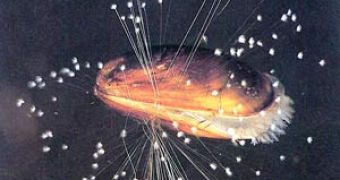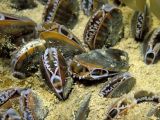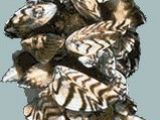You could be amazed by what mussels can do.
These mollusks live in seas and freshwaters. Scientists are fascinated since ever by how these beings attach themselves to the rocks. The animals can resist to the power of the waves or hungry predators and are almost impossible to pull out.
How do they do it?
When the young mussels establish in a site, they put out their tongue-shaped foot and through a channel along their foot slide a viscous protein that in a moment stiffens into 2 cm long elastic filaments.
After that, a type of minute cushion located on the extremity of the filament releases a droplet of natural adhesive, the mussel raise its foot and the first anchorage is ready.
These strategically located fibers form the byssus, secure the mussel to its residence the way cords secure a camp tent, in just 204 minutes.
People look at the byssus in the search of a glue that is not toxic, so flexible that penetrates in the smallest corners and adheres to any surface type, including under the water. This way, ships could be repaired on the water, without the costs of landing them for fixing.
And a paint that does not oxidize for bodywork would please the drivers. Such a glue would be extremely useful for surgeons joining broken bones or closing up wounds.
Stomatologists would use such a glue for filling cracked teeth.
The substance could not be achieved directly from mussels as for just a gram of it about 10,000 mussels would be necessary. Instead of this, a US team isolated and cloned the genes of five of the adhesive proteins, which can be inserted in bacteria for industrial production.
Nevertheless, mussels know better the right combination for each type of surface. As mussels feed by filtering, they adsorb many contaminants, toxic bacteria and chemicals and are wonderful purifying systems, useful as early prediction systems of water contamination.
Murky waters of the lakes can be filtered by mussels from bacteria and algae. Mussels also can produce pearls and many nacre objects come from mussels. The abyssal mussel Bathymodiolus leaves near the submarine volcanoes, where hot vents occur.
The vents eliminate highly toxic chemicals that can harm the mussel's DNA. But the mussel has special enzymes that continuously repair the DNA.
These enzymes are investigated with the hope of finding a way to fix human DNA impaired by illness or age. Of course, many mussels are an appreciated aliment, and in western Europe cuisine they possess a special place.
Some can turn to be pests, like the zebra mussel, originated in Eastern Europe, and which invaded in the '80s the Great Lakes in North America.
Without natural enemies, it bloomed so much that it has caused damages of millions of dollars by obstructing water entrance tubes and covering boats, docks and bridges. The foreign species also displaced the native ones.

 14 DAY TRIAL //
14 DAY TRIAL // 

